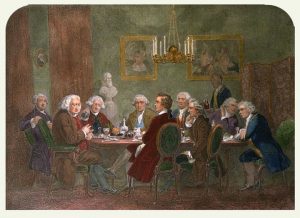
It is not uncommon to come across quotes on blogs about mathematics that praise it as the supreme work of mankind. Whatever the yardstick used to establish the ranking, be it beauty, usefulness, ingenuity or even the pursuit of pleasure and happiness, surely someone has found a quote from a celebrity who wrote that any of these qualities reaches an incomparable peak in mathematics. I am not going to criticise such a noble hobby, but, for the sake of showing a different opinion in a mathematics blog, I bring here today one of those priceless quotes that James Boswell (1740-1795) took directly from the mouth of Samuel Johnson (1709-1784). Johnson was, according to the Encyclopedia Britannica, an outstanding figure of 18th century English letters: poet, essayist, critic, conversationalist and lexicographer, of whom Boswell wrote a monumental biography entitled The Life of Samuel Johnson. According to Fernando Savater, Boswell was “something like the father of cultural journalism, and he combined unquestionable vices and irrefutable achievements”. It is no coincidence that the writer Lytton Strachey (1880-1932) said of Boswell that he was “a bum, a lecher, a drunkard and a snob” (Strachey was a member of the so-called Bloomsbury Group, closely connected with the Cambridge Apostles, of which Bertrand Russell and G. Harold Hardy were part). According to Boswell, Johnson was very clear about what the most fruitfull source of happiness is… and no, it’s not mathematics:
There is nothing hitherto devised by men that produces so much happiness as a tavern. The tavern chair is the throne of human happiness.
And most certainly, a mathematician of Stefan Banach’s stature could not have added anything other than “Amen”.
References
James Boswell, La vida de Samuel Johnson, Espasa, Madrid, 2007.

Leave a Reply